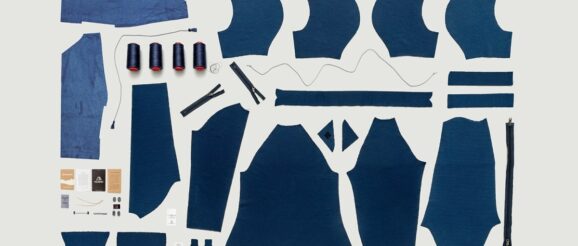Houdini Sportswear’s Open-Source Textile Innovation Initiative, Project Mono Air – COOL HUNTING®

Stockholm-based sportswear company Houdini has long offered products that emphasize a more sustainable approach. In fact, all the fabrics used this season have been biodegradable, recycled, recyclable, renewable or Bluesign-certified and, in 2018, CEO Eva Karlsson received The Award for Sustainable Leadership, which is presented annually by NMC Nätverket för Hållbart Näringsliv. The brand has been lobbying for accountability since 2001, when Karlsson joined. Under her helm, Houdini has worked even harder for the planet. Their most recent effort, the open-source initiative Project Mono Air, innovates in a category rife with environmental concerns and establishes a replicable blueprint for other brands.
“As a brand, we did right from the start and did not compromise with performance, did not compromise style and did not compromise with nature either,” Karlsson tells CH of the company she joined nearly two decades ago. “The combination of the three, which is absolutely possible, and has been possible all this time, has usually been looked upon in a very different way. Brands have done one product on the side that is sustainable of some sort and then they reduce their ambitions on quality or performance. And we just never did that. We did the opposite. We said, ‘How can we tweak this so it becomes even better and circular and sustainable forever?’”
Houdini’s Mono Air Houdi follows that way of thinking. Made from recycled materials and infinitely recyclable, this hooded fleece jacket “fights plastic waste.” The Polartec-produced material that it’s constructed from (known as Power Air Light) drastically reduces total microfiber shedding, a severe pollution problem identified in a Patagonia-backed research study. (Houdini says the official number is “80% less microfibers than regular high-quality fleece.”)
These eco-friendly attributes do not diminish performance, though. The Houdi proves lightweight yet warm and features a four-way stretch feel and insulating technology. Not only is the brand using the Houdi as a purchasable proof of concept, but it is also offering production insights to other brands—and hoping many will follow their lead.
It’s so much more fun to have all these brains that work in different ways and have different experiences and backgrounds and knowledge coming together
“We’ve always worked in a collaborative setting,” Karlsson continues. “Open source innovation for us has always been there as a way for us to share knowledge or insights with others who can align with us and co-create what we are aiming at. It’s also so much more fun to have all these brains that work in different ways and have different experiences and backgrounds and knowledge coming together. We’ve been taught in business to have competition as the base for everything; the foundation really. Then, maybe, there’s some collaboration on top. But the way we’ve been working, and it may be a more Nordic way, is having collaboration as the foundation. That is how we create great stuff… And the Mono Air project is a great example of that.”
On the Project Mono Air’s landing page, product listings exist alongside a hub for information. Actionable and educational, the information here encourages buyers to opt for something more sustainable but it also influences how they view the world once they’ve left the page. As of publish, six posts populate their knowledge center: from a breakdown of the aforementioned Mono Air Houdi to guides on how to design circular products and run a circular business. On their FAQ page, Houdini offers information on their efforts, the ultimate goal of the project and what roles Houdini, Polartec and purchasers play in it all—and how the textile industry at large needs to shift.
I don’t even understand a brand that would keep sustainable innovation for themselves. It’s completely contrary to what you’re trying to achieve.
“We believe in sharing. We believe in collaboration, especially when looking at sustainable innovations. I don’t even understand a brand that would keep sustainable innovation for themselves. It’s completely contrary to what you’re trying to achieve. You’re trying to save the world from microplastics and you’re keeping that technology for yourself? And we’ve been a little frustrated with this industry because there’s been quite a lot of that actually. It’s understandable in a way, because there’s investment involved and everybody wants to cash in on their best investments, but we want to push boundaries. We want to make our peers in the business realize that,” she says.
The Mono Air Houdi is just another step toward a waste-free world, but simply making more products isn’t the way forward, even if they’re less impactful on the environment. Change doesn’t begin or end with consumer preferences. This goal requires reinvention of the entire system. “We’re not creating a waste free world just by introducing this,” Karlsson agrees. “It’s going to be a long journey for this industry and every other industry to move from linear to circular, but we have to start and we have to push ourselves to do it faster.”
“There shouldn’t be a reason for customers to wonder if something is a bad choice in terms of sustainability. Why would we even supply something like that?” she says. “I think that’s something for brands to think about. We are the ones with the knowledge; we’re the ones with the responsibility; we can bring customers and then users on board who will engage in the circular movement together. We shouldn’t put the responsibility on [customers] to choose the right thing. It shouldn’t be, ‘Here’s the non-sustainable alternative. Here’s the sustainable alternative. Please choose the one you prefer.’ We don’t have time for that anymore.”
Images courtesy of Houdini
